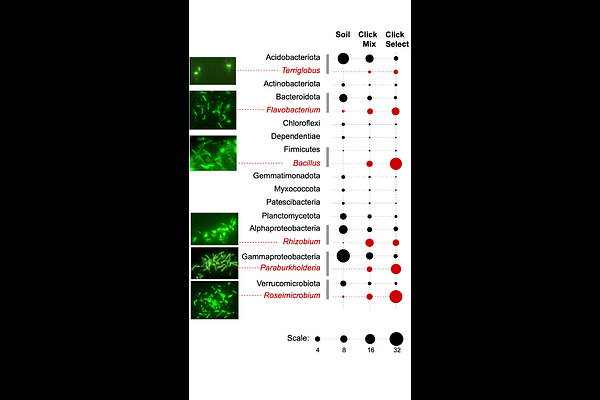BONCAT-Live for isolation and cultivation of active environmental bacteria

BONCAT-Live for isolation and cultivation of active environmental bacteria
Podar, M.; Mulay, S.; Vishnivetskaya, T. A.; Hochanadel, L.; Klingeman, D. M.; Lloyd, K. G.; Pelletier, D. A.
AbstractIn diverse environments, microbes drive a myriad of processes, from geochemical and nutrient cycling to interspecies interactions, including in association with plants and animals. Their physiological state is dynamic and impacted by abiotic and biotic conditions, responding to environmental fluctuations by changes in cellular metabolism, according to their genetic potential. Molecular, cellular and genomic approaches can identify and measure microbial responses and adaptation to environmental changes in native communities. However, isolating individual microbial cells that respond to specific changes for cultivation has been difficult. To address this, we developed a novel bacterial isolation approach (BONCAT-Live) by integrating bio-orthogonal non-canonical amino acid tagging (BONCAT) in diverse native communities, with isolation and cultivation of cells responding to specific stimuli, at different time scales. In frozen Arctic permafrost samples, we identified and isolated dormant bacteria that become active after thawing under native or nutrient enriched conditions. From a Populus tree rhizosphere, we isolated strains that thrive under high concentrations of root exudates that act as defense compounds and nutrients. In a human microbiome, we identified and isolated bacteria that rapidly proliferated when exposed to metabolites provided by the host or other co-occurring microbes. Further characterization of isolated bacterial strains will provide opportunities for in depth determination of how these microbes adapt to changes in their environments, individually and as part of model communities.